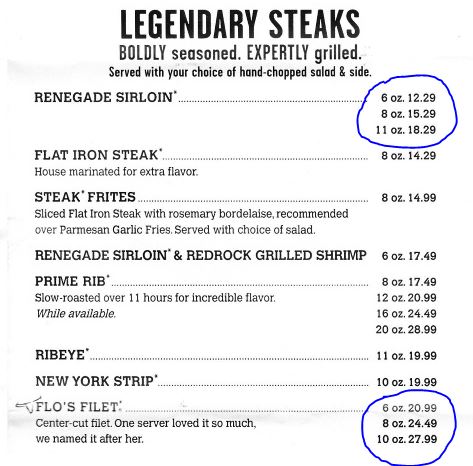-
29
Nov
FAKs Are Bad for LTL Shippers

Do restaurants charge the same price for filet mignon and sirloin? Of course not, or they would lose a lot of money selling a lot of filets and no sirloins. So why is this type of pricing practice so widely accepted within LTL?
You may think FAK programs are bad for LTL carriers, and that LTL carriers do not like FAKs. You would be correct. But FAK programs are also bad for shippers. FAK programs represent risk and inefficiencies, and in today’s world those two factors come with a cost.
In years past, shippers were indeed able to obtain better pricing via FAK programs. It is one reason why FAK programs seem so ubiquitous. Carriers were willing to take a chance that the freight profile claimed by the shipper was accurate (sure, everyone ships CL50 freight, right??). Carriers were simply not as sophisticated back then, and their costing systems were not as sophisticated either. And, simply put, shippers had more control over the relationship. Further, carriers introduced rules such as Density Minimum Charge and the NMFC’s Item 680 rule (aka 65% rule) to protect themselves from self-inflicted FAK wounds. Show me a shipper who likes these rules.
Today’s LTL carrier does not operate in that “take a chance” fashion. Virtually all carriers utilize advanced costing systems which help them see which shipments are profitable and which are not. And guess what? The greater the discrepancy between actual and FAK class, the greater the odds of a money-losing or non-compensatory shipment. Carriers can cost freight on a more-precise basis now, and they will adjust your pricing accordingly. That big FAK program you negotiated years ago may be your worst enemy.
Today’s LTL carrier does not want new business for the sake of new business. They want new PROFITABLE business. They want to grow the bottom line, not the top line. And if they don’t have confidence of your freight’s profile variables (weight, density, pieces, packaging), they build that risk into the price offered. That way, if they miss the mark, they actually make more profit than expected rather than the other way around. And if they build in so much risk that they do not win the business, well, they are willing to take that kind of risk now. So if you are preparing for a sourcing event or a carrier change, absolutely do not begin this process unless you have accurate dimensional data on your freight.
FAK programs also whittle away at trust and create inordinate friction. LTL carriers spend enormous amounts of money on equipment and staffing just to inspect your freight, verify the weight and dims, and correct charges accordingly. Often this is because once an FAK program is established, a shipper will describe all of their freight based upon the FAK class. This all-to-frequent scenario then leads to large invoice surprises which create an administrative burden for both sides.
What can shippers do to ensure they get the absolute best pricing and capacity from your LTL carrier partners and optimize your operation at the same time? Several things:
- Know your freight profile: Know your weight and dims. Trust me, your carriers will figure it out if you don’t. Capturing your freight profile before freight tender will significantly reduce invoice surprises, will provide your carriers with the operational data they need, and will eliminate risk as a carrier cost. Give your carriers this accurate data on an EBOL, and be a real Shipper of Choice.
- Eliminate any FAKs: The larger the FAK, the greater the magnitude of cross-subsidization within your pricing structure. Say you ship pillows and bed frames, and an FAK covers both products. You are paying more for the bed frames and less for the pillows than you should. If you don’t correct that, you are also probably charging customers less for your pillows and more for our bed frames than you should.
- Do your part to build trust: Show your carrier partners that you are serious about providing them the accurate shipment data they need, when they need it. Show them you are ready and willing to pay a fair price, for each and every shipment, without the carrier having to make a “take the bad with the good” decision. Don’t expect filet mignon for the same price as ground chuck.
- Eliminate risk: Rare is the shipper who’s product is always the exact same size and weight. Products change. Packaging changes. Materials change. New products are added. Unpopular products are eliminated. Adopt a pricing program that compensates the carrier based upon the true variables that drive their costs. Class does not drive cost. Density (weights, dims) and configurations (stackable, long) drive costs.
- (479) 461-1672
- Contact Us
